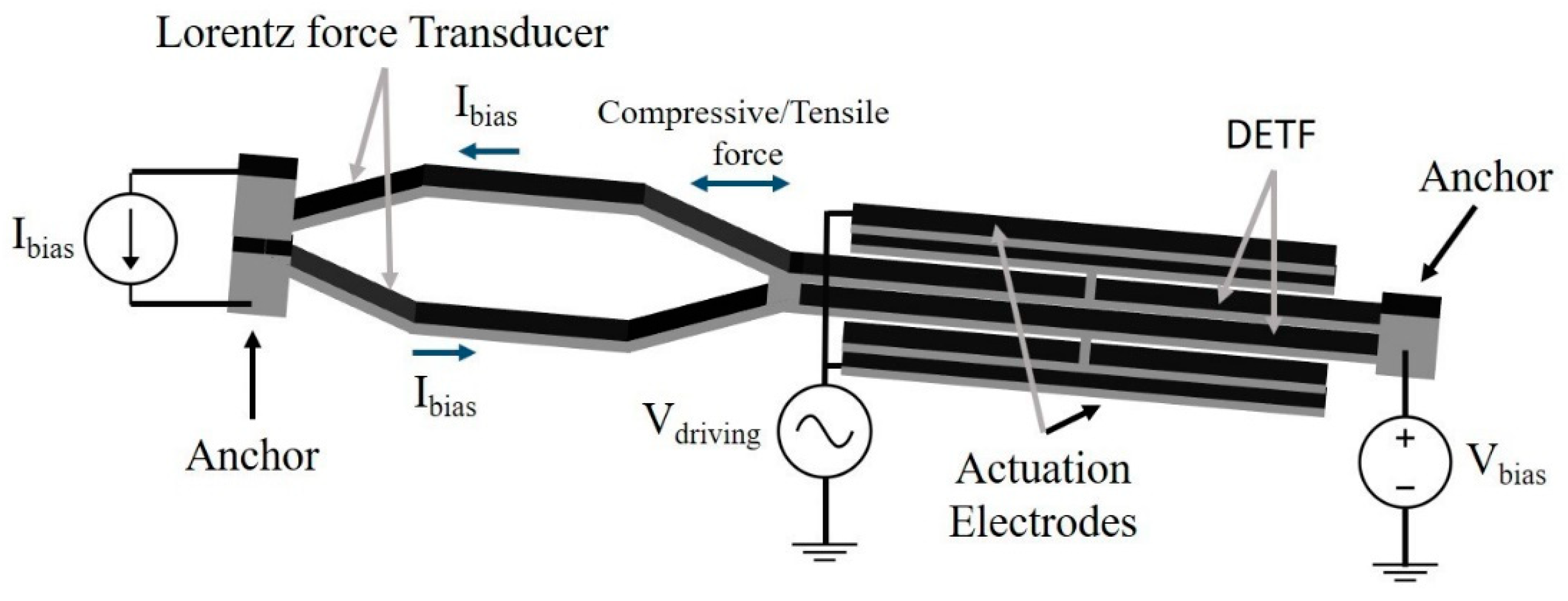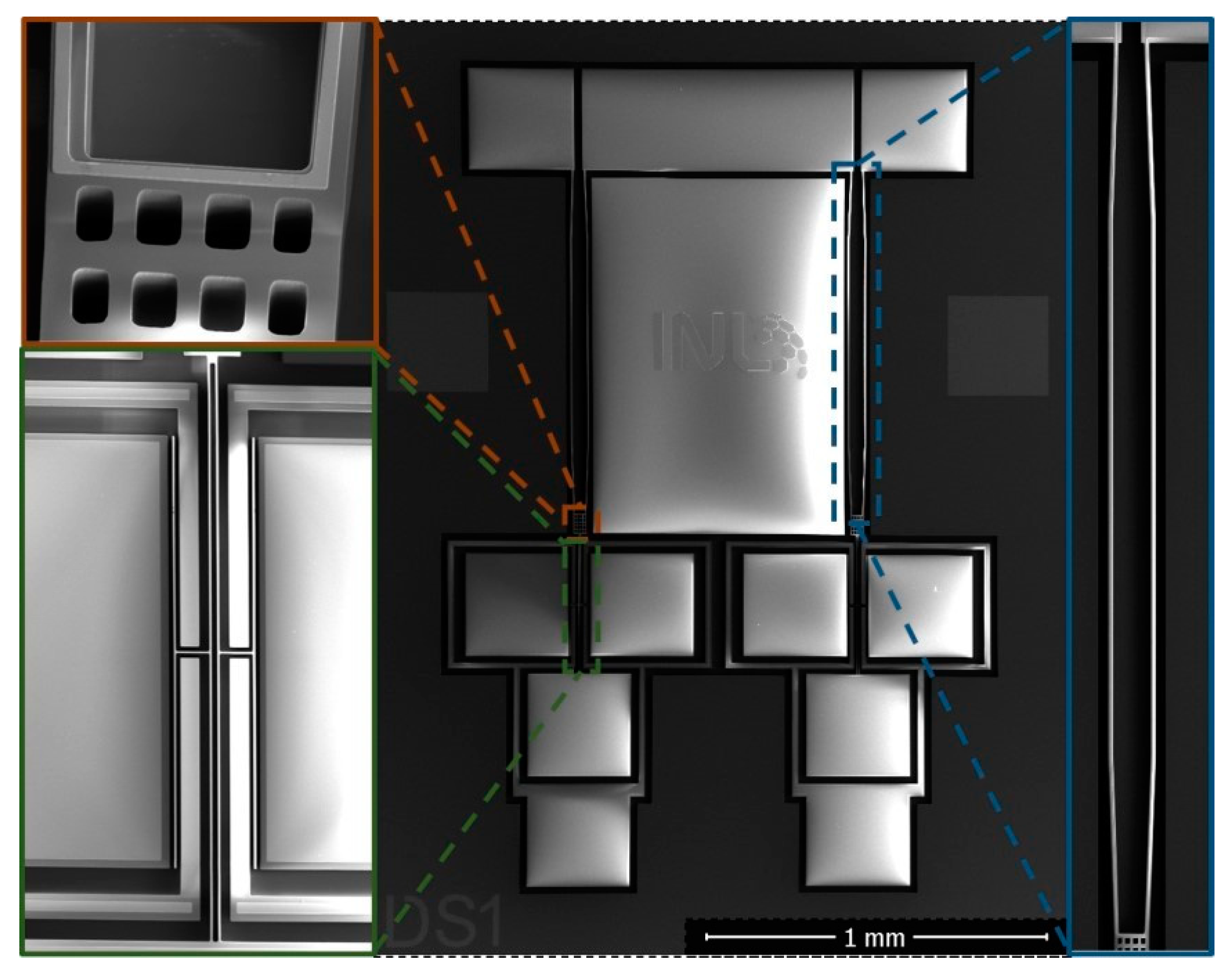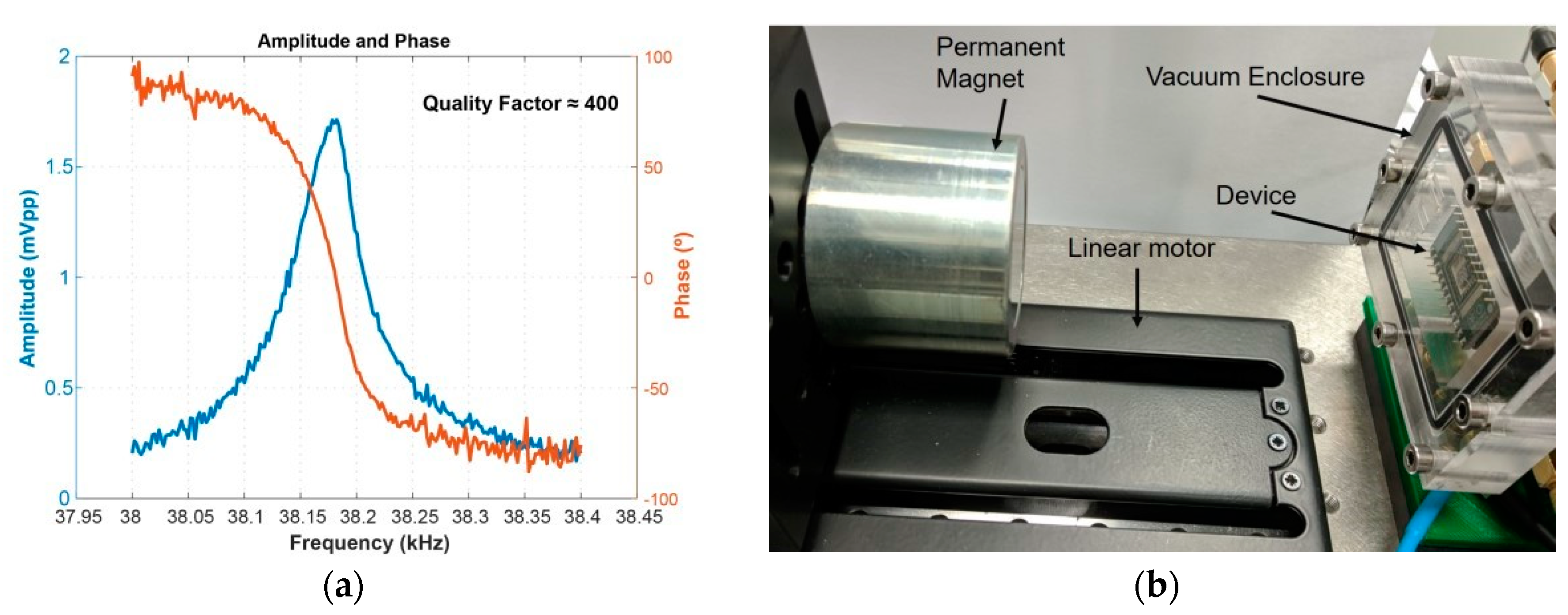Frequency Modulated Magnetometer Using a Double-Ended Tuning Fork Resonator †
Abstract
:1. Introduction
2. Magnetometer Design
3. Experimental Results
4. Conclusions
Acknowledgments
Conflicts of Interest
References
- Kumar, V.; Ramezany, A.; Mahdavi, M.; Pourkamali, S. Amplitude modulated Lorentz force MEMS magnetometer with picotesla sensitivity. J. Micromech. Microeng. 2016, 26, 105021. [Google Scholar] [CrossRef]
- Laghi, G.; Marra, C.R.; Minotti, P.; Tocchio, A.; Langfelder, G. A 3-D Micromechanical Multi-Loop Magnetometer Driven Off-Resonance by an On-Chip Resonator. J. Microelectromech. Syst. 2016, 25, 637–651. [Google Scholar] [CrossRef]
- Li, M.; Ng, E.J.; Hong, V.A.; Ahn, C.H. Single-structure 3-axis lorentz force magnetometer with sub-30 nT/sqrt(Hz) resolution. In Proceedings of the IEEE 27th International Conference on Micro Electro Mechanical Systems (MEMS), San Francisco, USA, 26–30 January 2014; pp. 80–83. [Google Scholar]
- Dellea, S.; Laghi, G.; Langfelder, G.; Longoni, A.; Minotti, P.; Tocchio, A.; Zerbini, S. Off-resonance operation of in-plane torsional MEMS magnetometers. Procedia Eng. 2014, 87, 819–822. [Google Scholar] [CrossRef]




Publisher’s Note: MDPI stays neutral with regard to jurisdictional claims in published maps and institutional affiliations. |
© 2018 by the authors. Licensee MDPI, Basel, Switzerland. This article is an open access article distributed under the terms and conditions of the Creative Commons Attribution (CC BY) license (https://creativecommons.org/licenses/by/4.0/).
Share and Cite
Moreira, E.E.; Gaspar, J.; Rocha, L.A. Frequency Modulated Magnetometer Using a Double-Ended Tuning Fork Resonator. Proceedings 2018, 2, 1028. https://doi.org/10.3390/proceedings2131028
Moreira EE, Gaspar J, Rocha LA. Frequency Modulated Magnetometer Using a Double-Ended Tuning Fork Resonator. Proceedings. 2018; 2(13):1028. https://doi.org/10.3390/proceedings2131028
Chicago/Turabian StyleMoreira, Eurico Esteves, João Gaspar, and Luis Alexandre Rocha. 2018. "Frequency Modulated Magnetometer Using a Double-Ended Tuning Fork Resonator" Proceedings 2, no. 13: 1028. https://doi.org/10.3390/proceedings2131028
APA StyleMoreira, E. E., Gaspar, J., & Rocha, L. A. (2018). Frequency Modulated Magnetometer Using a Double-Ended Tuning Fork Resonator. Proceedings, 2(13), 1028. https://doi.org/10.3390/proceedings2131028




